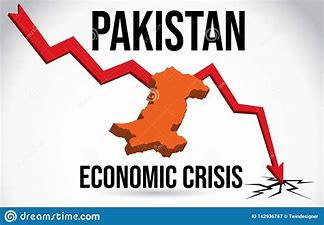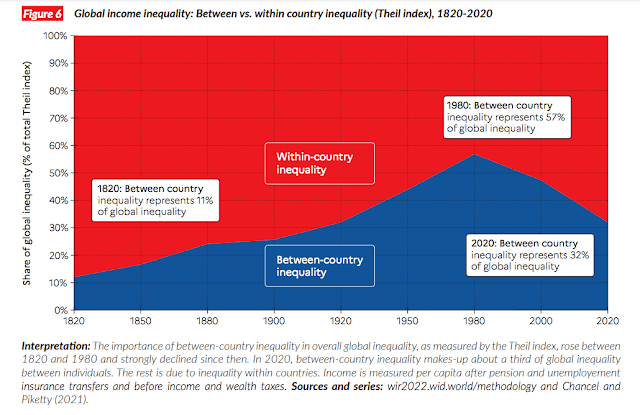Discover the potential drawbacks of lowering interest rates and strategies to minimize their negative impacts. Explore how this approach aligns with the interest-free economy advocated by the Islamic economic system. Gain insights into the implications of interest rate reduction and learn about regulatory measures, diversification of investments, and targeted spending programs that can reduce the challenges while stimulating economic growth.
Introduction
Lowering interest rates can have significant implications for an economy, influencing various aspects of financial markets, borrowing, spending, and savings. While it can stimulate economic growth and provide benefits, there are also potential drawbacks to consider. In this article, we will explore the possible disadvantages of lowering interest rates and discuss strategies to minimize their negative impact.
Lowering interest rates or implementing a zero-interest rate approach aligns with the concept of an interest-free economy proposed by the Islamic economic system. In Islamic finance, the charging and paying of interest (riba) are prohibited as it is believed to lead to economic imbalances and injustice. By adopting interest-free policies, economies can promote financial stability, ethical financial practices, and equitable wealth distribution. This approach fosters a system that focuses on productive investments and encourages economic activities that benefit society as a whole. We will discuss these details in a separate article.
Potential Drawbacks of Low-Interest Rates
Lowering interest rates is a monetary policy tool used by central banks to stimulate economic activity, encourage borrowing and spending, and support economic growth. While it can have positive effects, there are several potential drawbacks to consider.
1. Increased Inflation
One of the primary concerns associated with lowering interest rates is the potential increase in inflation. When interest rates are low, people are more likely to borrow and spend money, which can lead to excessive demand for goods and services. As demand outpaces supply, prices for goods and services may rise, resulting in inflationary pressures.
2. Reduced Savings Returns
Lower interest rates often translate to reduced returns on savings accounts, certificates of deposit (CDs), and other fixed-income investments. This can be problematic for individuals who rely on these investments for income or have long-term financial goals, such as retirement planning. Lower returns on savings can limit the ability to accumulate wealth and achieve financial objectives.
3. Diminished Profitability for Banks
Banks generate income through the interest they charge on loans. When interest rates are lowered, their profit margins can be squeezed, especially if they are unable to lower the interest rates on their deposits proportionally. This can affect their profitability and potentially limit their ability to provide competitive rates on loans and other financial products.
4. Potential Asset Bubbles
Low-interest rates can incentivize investors to seek higher returns by turning to riskier assets such as real estate or the stock market. This increased demand can drive up prices and create speculative bubbles. If these bubbles burst, it can lead to market instability and financial turmoil, affecting both investors and the overall economy.
5. Impact on Pension Funds
Lower interest rates pose challenges for pension funds and retirement plans. These funds often rely on fixed-income investments that generate returns based on interest rates. With lower interest rates, it becomes more difficult for pension funds to generate the necessary returns to meet their long-term obligations. This can create funding gaps and potential challenges in providing retirees with expected benefits.
Strategies to Minimize the Drawbacks
To minimize the negative impacts of low or zero interest rates, several regulatory measures can be adopted. These measures aim to balance the benefits of stimulating economic growth with the need to maintain stability and address potential risks. Some strategies to consider include:
1. Attentive Monetary Policy
Central banks should carefully monitor and assess economic conditions, inflationary pressures, and financial stability risks when implementing interest rate policies. They should adopt a sensitive and balanced approach to ensure that interest rates align with the prevailing economic conditions and policy objectives.
2. Enhanced Financial Regulation
Strengthening financial regulations and oversight is crucial to mitigate risks associated with low-interest rates. Measures should be implemented to prevent excessive borrowing, speculative investments, and unsustainable debt levels. This can help maintain financial stability and reduce the likelihood of asset bubbles. An asset bubble refers to a situation where the price of an asset, such as stocks, bonds, real estate, or commodities, experiences a rapid and unjustifiable increase, detached from its underlying fundamentals.
3. Diversification of Investments
Encouraging diversification in investment portfolios can help reduce the negative impacts of low interest rates. Investors should be encouraged to have a mix of assets such as equities, bonds, commodities, and alternative investments. Diversification allows for spreading the risk and potentially achieving higher profits.
4. Fiscal Stimulus Measures
Governments can implement fiscal stimulus measures during periods of low-interest rates to boost economic growth and counterbalance potential drawbacks. These measures can include infrastructure investments, tax incentives, and targeted spending programs that stimulate economic activity and create employment opportunities.
4A. Stimulate Targeted Spending Programs
Among the strategies to minimize the negative impact of low-interest rates, targeted spending programs are considered an appropriate approach. These programs involve government initiatives that allocate funds to specific sectors or areas to achieve specific economic or social objectives. Here are a few examples:
a. Infrastructure Investment
Governments may implement targeted spending programs to invest in infrastructure projects such as roads, bridges, railways, airports, and public transportation systems. These investments create job opportunities and improve overall infrastructure, enhancing economic productivity and efficiency.
b. Research and Development (R&D) Funding
Allocating funds to support R&D activities in strategic sectors like technology, healthcare, renewable energy, or agriculture can drive innovation, promote competitiveness, and lead to the development of new products, services, and technologies. This can contribute to long-term economic growth and resilience.
c. Education and Skills Development
Targeted spending programs in education aim to improve access to quality education, enhance skills training, and support lifelong learning initiatives. By investing in human capital development, governments can foster a more skilled workforce, boost productivity, and promote economic growth.
d. Regional Development Initiatives
Programs that support the development of specific regions or areas can stimulate economic activity and create employment opportunities. These initiatives often include targeted investment, tax incentives, and business support to address regional disparities and foster inclusive growth.
e. Green Initiatives and Sustainable Development
Targeted spending programs directed toward promoting renewable energy sources, supporting energy-efficient infrastructure, implementing conservation measures, and incentivizing eco-friendly practices across industries contribute to sustainable development and a greener economy.
Targeted spending programs allow governments to strategically allocate resources, addressing specific needs and priorities. By targeting specific sectors or areas, governments can maximize the impact of public investments and stimulate economic growth in targeted segments of the economy.
4B. Adopting a Real Money Approach
The suggestion of “adopting gold, silver, or other metals as a currency”, this strategy needs careful consideration. Reverting to a metal-based currency system would require significant structural changes to the global monetary system and might not eliminate all the problems associated with low-interest rates. While metals like gold and silver have historically maintained their value, modern economies rely on fiat currency systems backed by central banks’ credibility and stability.
Metal-based currency offers certain advantages, including being a store of value, a potential hedge against inflation, universal recognition, and substantially limited supply. However, the practical implementation of a metal-based currency system would present challenges such as storage, transportation, and standardization. The stability of metal-based currency values can also be influenced by market speculation, demand fluctuations, and geopolitical events.
The choice between fiat currency and metal-based currency involves a complex analysis of economic, historical, and practical considerations. It requires weighing the advantages and potential drawbacks of each system, taking into account the specific needs and circumstances of the economy in question. But the metal-based currency has advantages over paper currency.
Conclusion
Lowering interest rates can be a useful tool for stimulating economic growth, but it also carries potential drawbacks. Increased inflation, reduced savings returns, diminished profitability for banks, potential asset bubbles, and the impact on pension funds are among the concerns associated with low-interest rates.
To minimize the negative impacts, regulatory measures should be adopted. Attentive monetary policy, enhanced financial regulation, diversification of investments, and fiscal stimulus measures can help reduce the adverse effects of low-interest rates. Additionally, targeted spending programs can strategically allocate funds to specific sectors or areas, stimulating economic growth and addressing specific challenges.
The choice of regulatory measures depends on a thorough analysis of the specific economic conditions, risks, and policy objectives. It requires a comprehensive understanding of the potential benefits and trade-offs associated with each approach. By implementing appropriate measures, governments and financial institutions can navigate the challenges posed by low-interest rates and promote sustainable economic growth. Ground realities and arguments largely support the implementation of low or zero interest rates.
*Read more about Combat Global Recession with Lower Interest Rate









